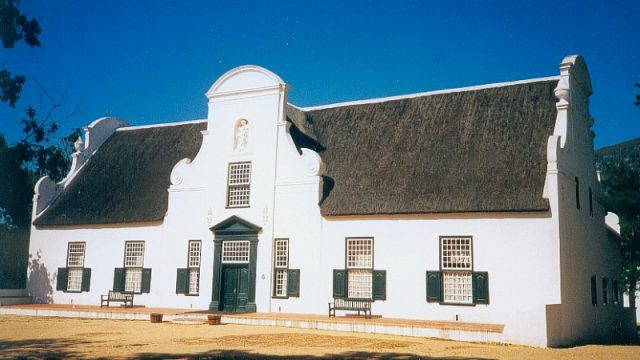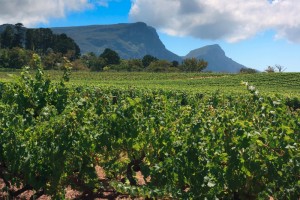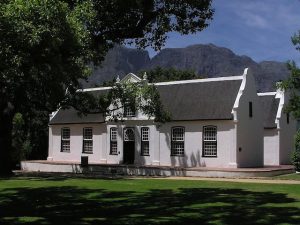The 2 February 1659 was a day for celebration in the fledgling colony at the Cape of Good Hope.
“Heeden is Gode loff van de Caepse druyven d’eerste mael wijn geparst,” scribbled the governor Jan van Riebeek in his journal, the High Dutch recording the precise date in history that wine was first made in South Africa: “Today, praise be to God, wine was pressed for the first time from Cape grapes.”
While South Africa may be part of the New World of winemaking, alongside the likes of California, Argentina and Australia, our wine heritage stretches back over 350 years. The new Dutch colony may have been established to supply the ships plying the spice routes to the East with fresh fruit and vegetables, but wine was soon added to the list of essential provisions. In 1655 the first vines were imported from Spain, Germany and France and planted in the Company’s Garden, in what is today the centre of modern-day Cape Town.
The first shoots of the wine industry may have sprouted in the Company’s Garden, and even today it’s still worth a wander for its botanical section and recently planted heritage garden, but the Cape’s most famous wines first came from the winelands of Constantia.
With its history stretching back to 1685, Groot Constantia is today one of the highlights of the Constantia Valley, a region particularly famous for its white wines. The large tasting room facility caters mainly for larger tour groups, yet offers a surprisingly personable experience. Don’t miss out on winemaker Boela Gerber’s 2013 Chardonnay: earlier this year it was voted the best in the world at the 22nd annual Chardonnay du Monde.
Many of the Constantia estates date back to the late-1600s, and have their own stories to tell.
Klein Constantia is the home of the acclaimed sweet wine Vin de Constance; a tipple enjoyed by European royalty and immortalised in print by the likes of Charles Dickens and Jane Austen. This charming estate offers a low-key tasting room with well-trained pourers to guide you through the range of wines. Aside from the Vin de Constance, their Sauvignon Blancs are particularly good.
Steenberg Farm also does a superb Sauvignon Blanc, alongside its excellent Shiraz and Nebbiolo. The chic tasting room alongside the winery is well worth a visit for the architecture and setting, and do ask the staff to tell you the remarkable story of Catharina Ras, the farm’s first owner who settled Steenberg in 1682 and tallied up five husbands in her remarkable life.
It was another strong woman who laid the foundations for Stellenbosch estate Neethlingshof. After the death of her husband in 1813, Maria Magdalena Marais poured her energy into enlarging and developing this scenic estate on the hills outside Stellenbosch. A stately row of stone pines lines the long avenue leading towards the historic manor house, a National Monument that is today home to a charming bistro restaurant.
Look carefully above the doorway and you’ll see six flowers crafted into the gable. Maria placed these here in 1814: one for herself and each of her five daughters. Maria and her six flowers are also celebrated in the Short Story Collection of wines from cellar master De Wet Viljoen.
The Six Flowers is an interesting blend of six white wine varieties: Chenin Blanc, Sauvignon Blanc and Chardonnay, with splashes of Viognier, Gewürztraminer and Weisser Riesling. The Maria Noble Late Harvest is also superb, while wines like The Owl Post Pinotage and The Caracal red blend mark the modern conservation success stories playing out across the estate.
There’s no shortage of stories at the atmospheric Muratie Estate either. The cosy, cobweb-filled tasting room feels as if it hasn’t changed for centuries, with wooden barrels and concrete fermentation tanks filling the tiny space. It’s a charming winery where well-informed tasting room staff are only too happy to share the remarkable tale of the original owner Laurens Campher and his love affair with a slave woman in the castle of Cape Town. Their romance, which has a happy ending, is celebrated in the excellent Bordeaux-blend ‘Ansela van de Caab’.
At nearby Uitkyk Estate the history of the farm is literally carved into the property. Unlike the ornate Cape Dutch style common to most local manor houses, this iconic estate is famous for its double-story Georgian-style manor. A National Monument completed in 1788, it’s a unique piece of the region’s architectural heritage. Take a closer look at the windows alongside the front door to discover the etchings left behind by centuries of visitors.
History aside, the ‘Glass Memoires’ Méthode Cap Classique bubbly is well worth a try, but the estate is also famous for its Carlonet Cabernet Sauvignon. In summer Georgian-style picnics are offered on the expansive lawns under the oak trees.
If you’re heading towards Franschhoek, both Plaisir de Merle and La Motte estates offer wonderful Cape Dutch architecture, as does the historic Boschendal Estate.
Boschendal is particularly worth a visit as an example of a classic Cape farm reborn. Over the past year major renovations have given the estate a new lease on life, with an array of upmarket self-catering accommodation alongside a new farm deli and wine-tasting centre. Most exciting is the addition of a fine-dining restaurant under the skilled knife of chef Christiaan Campbell. The planting of a three-hectare vegetable garden allows Campbell to offer true farm-to-fork dining in what was once the estate’s original wine cellar.
Up and over the Helshoogte Pass and across Stellenbosch, the Somerset West estate of Vergelegen (far away) is another traditional Cape farm thriving in the 21st-century. First settled in the early-1700s when there was little more than wilderness here, the rich history of the farm echoes across the property. The wall around the manor house garden were built high enough to keep lions out, the estate’s famous Camphor Trees are over 300 years old, and the rooms in the original manor house have been immaculately restored. Guided heritage tours are offered daily from the wine tasting centre, where you can also sample the world-class red and white blends from winemaker Andre van Rensburg.
The Cape’s vineyards have come a long way in the past 350 years and are today a major player in the globalised world of wine. Happily though, the winelands a short drive from the centre of Cape Town still offer an exciting look back at the area’s rich and varied history.




